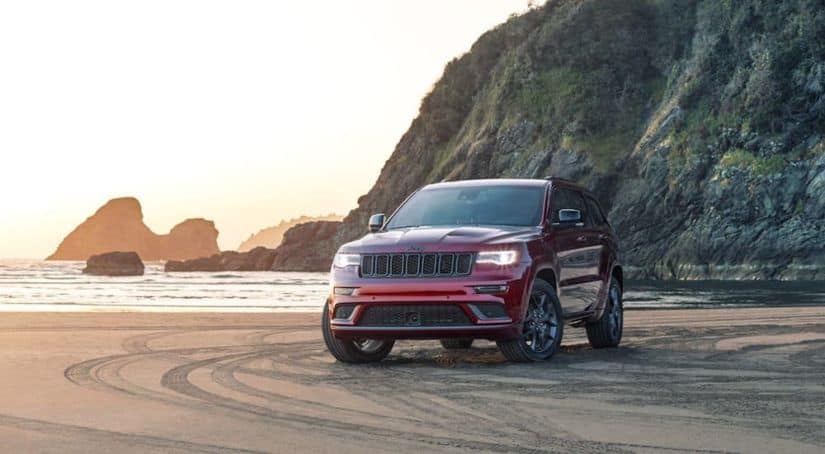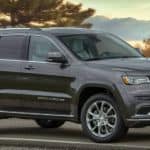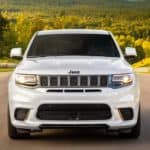Busy schedules and outdoor adventures require a vehicle that can meet your daily driving demands with power, grace, comfort, and convenience. That’s why you should be looking at a midsize SUV as your next vehicle. Large enough to accommodate families, friends, and pets but small enough to get great gas mileage, midsize SUVs are the perfect balance between compact and full-size SUVs. The decision to buy a midsize SUV is the easy part; the hard part is deciding which one. So today, we are going to compare two of the most popular vehicles in the segment to aid you in determining which is better for you: 2020 Jeep Grand Cherokee and 2020 Toyota 4Runner. Let’s get into it.
A Look at Performance
The first thing most people look at when trying to choose any kind of SUV is performance. And excellent performance is exactly what the Grand Cherokee offers – in many different ways at that. The standard engine is a 3.6-liter V6 engine that generates 295 hp and 260 lb-ft of torque. This is quite impressive power for the beginning, but the Grand Cherokee has three other options that will absolutely blow any competition out of the water, including the 4Runner. The alternatives you might find include a 5.7-liter V8 that pumps out 360 hp and 390 lb-ft of torque, a 6.4-liter V8 that makes 475 hp and 470 lb-ft of torque, and a supercharged 6.2-liter V8 producing a whopping 707 hp and 645 lb-ft of torque.
For every trim (except the Trailhawk), FWD is standard, and AWD is optional. For the Trailhawk, AWD is standard due to its off-road enhancements. Fuel economy varies between each powertrain, but you can expect to see an average of 19 MPG in the city, 26 MPG on the highway, and an average of 21 MPG combined. And rounding out all of the great things about the Grand Cherokee’s performance is towing. The towing range is somewhere between 3,500 and 7,200 pounds, depending which powertrain you buy. So not only does the vehicle offer excellent engines with great fuel economy, but it is also strong.
Meanwhile, all of the 4Runner models are powered by the same engine. This is a 4.0-liter V6 engine that generates 270 hp and 278 lb-ft of torque. And unfortunately, not only does it fall short due to having only one, underpowered engine, but it also lacks in fuel economy. The estimated fuel economy is set at 17 MPG combined (16 city/19 highway), which is significantly worse than its competitor’s. Additionally, it can only pull up to 5,000 pounds, which again, does not come close to the Grand Cherokee’s capabilities. Overall, in terms of performance, the Grand Cherokee is far more advanced. But performance is not everything, so let’s take a more in-depth look at the offerings of each vehicle.
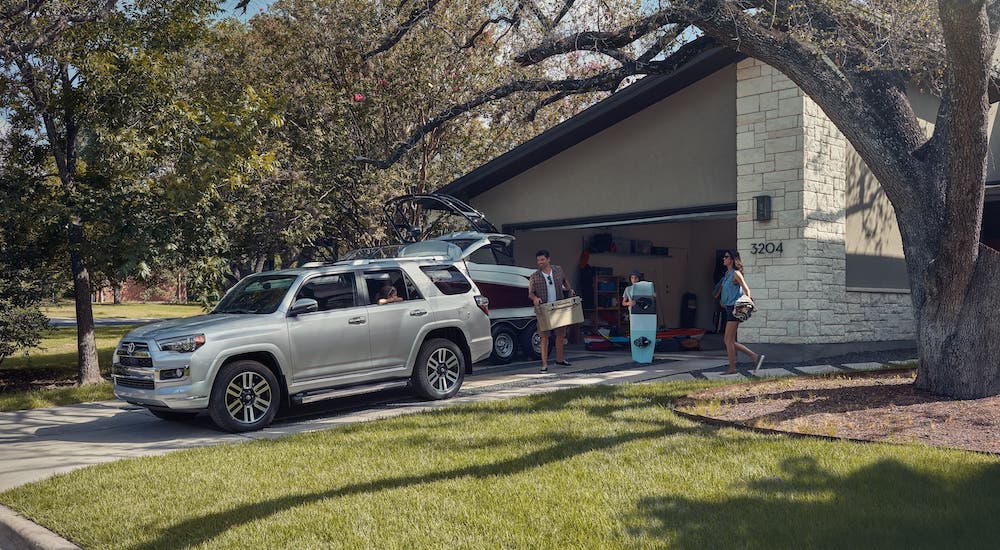
All About the Base Trims
Let’s start by looking at what the base, entry-level trims of these vehicles have to offer. Having an understanding of the base model will not only tell us about those trims but also what to expect as we climb up the ladder into the upper-level models.
The Grand Cherokee Laredo is the base model. It comes with comforts such as dual-zone climate control and conveniences, like the advanced infotainment interface. Displayed on a large 7-inch touchscreen, this system uses Bluetooth for hands-free calling and text messaging, a rearview camera for backing up safely, and compatibility with Apple CarPlay and Android Auto for seaming smartphone integration. Some of the safety features include rear cross-path detection and blindspot monitoring.
The 4Runner SR5 is the opposing base model. It is also well-equipped with an advanced infotainment system, compatibility with Apple CarPlay/Android Auto, and the Toyota Safety Sense P suite. This includes adaptive cruise control, lane-departure warning, pre-collision warning, and pedestrian detection. So, seemingly, these base trims offer the same qualities. However, it is important to note that the Grand Cherokee provides them at a lower starting price as the Grand Cherokee Laredo starts at $34,000, and the 4Runner SR5 starts at $36,120.
Mid-Level Trims
The reason to upgrade to a higher trim when looking at vehicles is to get more features. But, moving into the mid-level trims from the base trims on these two vehicles, there are minimal changes made. That said, though, the Grand Cherokee does offer quite a few upgrades – especially in comparison to the 4Runner.
When you upgrade to the Limited trim, which is the second in the Grand Cherokee lineup, you will receive some upgrades. These include heated seats, a heated steering wheel, a larger 8.4-inch infotainment screen, and remote start technology. When upgrading to the 4Runner’s second trim, the SR5 Premium, the only significant change is the addition of heated trims. So if you are looking to purchase a mid-level trim, the Grand Cherokee is, again, the better choice.
Upper-Level Trims
And of course, this would not be a comparison without looking at the upper-level trims. These trims are for those who want luxury and the best performance possible. Starting with the Grand Cherokee, the Overland trim gets a restyled instrument cluster, and the Summit adds a 19-speaker Harman Kardon sound system. It also receives a self-parking system, which can come in handy for parallel street parking in urban neighborhoods.
On the other hand, the 4Runner Venture offers a stylized roof rack, wheels, and exterior accents. And the luxurious Limited trim offers leather upholstery, keyless ignition/entry, and dual-zone climate control. And finally, the Limited Nightshade Edition is a bit more like a package than a trim. It adds black exterior accents for a darkened aesthetic. A lot of the upgrades offered in the upper-level 4Runner trims are just style preferences, though. And it should be noted that many of the actual luxury features are things that are offered at the base level of the Grand Cherokee. This means that you can get what the 4Runner has to offer for much cheaper with the Grand Cherokee.
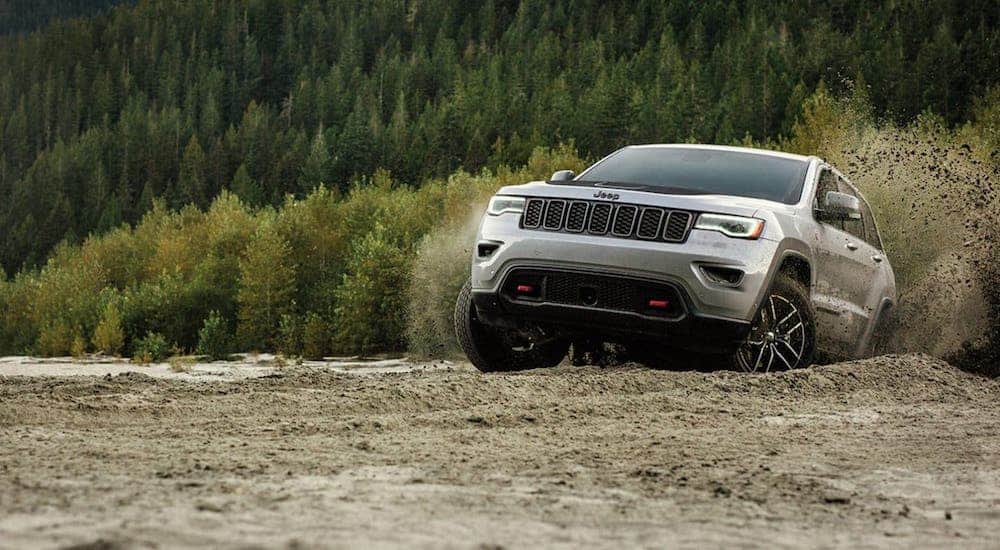
Off-Road Trims
Of course, each of these SUVs also has special trims for off-roading. However, we all know that Jeep is known for off-roading, and that is made evident in this comparison. The Grand Cherokee Trailhawk is a fan favorite among Jeep enthusiasts. It gets underbody skid plates to protect against damage from rocks, off-roading tire to climb over rough terrain, and a special set of wheels. It also comes with the Quadra-Drive II terrain-selectable traction control system that makes off-roading a breeze. Then, there is the Trackhawk. Riding on unique 20-inch wheels, this top-of-the-line off-roading model comes with larger brakes and that dedicated powertrain we mentioned before.
As for the 4Runner, there are three TRD models to choose from. The TRD Off-Road features a multi-terrain selectable system, locking rear differentials, and a suspension system that has been optimized for off-roading. The TRD Off-Road Premium takes those features and just adds heated seats. And the third option is the TRD Pro. This top-tier off-roading model builds off of the TRD Off-Road Premium by adding all-terrain tires, skid plates, a JBL stereo system with 15 speakers, and a sunroof. Most of these features are interior, though, which does not necessarily help with off-roading. The Grand Cherokee trims, though, are really made for off-roading, making them superior.
Which SUV Should You Buy?
Long story short: Buy the Jeep Grand Cherokee. Not only are there more options when you buy a Jeep over a Toyota, but there are better options. And most of these better options come at a lower price. If you are deciding between these two vehicles and want great performance and luxury features at a low cost, the 2020 Jeep Grand Cherokee is the right choice.
